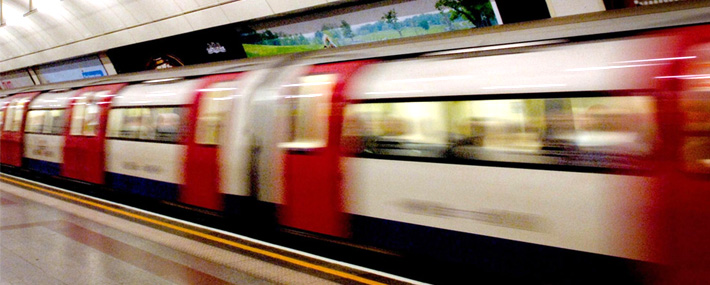2013 marked the 150th year since the London Underground became the first underground rail system. On that day, around 40,000 people were carried on the service that ran between Farringdon Street and Paddington.
Since the early days of gas lit platforms, steam powered trains and class division and now with around 3.5 million daily users, the tube system has come a long way since then. We look back on the history and practices of the victorian era and look at how they have evolved into the standards and codes of practice prevalent on the LU network today.
The worlds first underground network
When it was first opened, the London Underground was the first of its kind in the world, it was a pioneer of engineering and has driven many developments since then. One of the biggest differences compared to the current underground was the development of increased safety measures. In its early days the tube was remarkably different to the modern day system we know today. A key difference was the use of steam powered carriages.
The problems of using steam trains in an underground environment were obvious from the very first day, with a porter being taken to hospital and several passengers having to leave the platforms due to the smoke and fumes. In efforts to improve the air quality within stations, even smoking was restricted, as to reduce its contribution to the poor air quality.
Electric powered carriages
Electric locomotives were first used on the London underground as early as 1890, with the district and circle lines switched fully from steam power to electricity in 1905. Although it wasn’t until 1961 when the last steam-hauled passenger trains were replaced.
With the introduction of a fully electrical underground rail system, old systems would have to be upgraded to accommodate the new power cables and supplied that lined the tunnels. Introducing the use of various cabling accessories such as cable hangers, cleats and flexible conduits.
Introduction of LUL approval and LUL standard 1-085
In 1987, a fire broke out at the Kings Cross underground station where 31 people lost their lives and 100 others were injured during the incident. It was revealed after the accident that the fire itself was only part of the reason for the deaths and injuries. Many of the products used on the London underground during the time contained harmful hydrocarbons that not only released harmful, toxic smoke which affected the breathing of the victims but also burnt with a thick black smoke, severely reducing their visibility and ability to find the exits.
As a result of the tragedy, the Fire Precautions (Sub-Surface Railways Stations) Regulations were introduced in 1989. These regulations, also known as Section 12, require that all electrical equipment within the Underground Network must adhere to strict safety standards.
All electrical cable and accessories installed within Section 12 locations must meet the requirements of LUL standard 1-085. This standard outlines the fire safety performance of the materials used, including smoke emission, flammability and flame spread.
Demand for LSFZeroHalogen (LSZH) products
Since the Kings Cross fire, the use of halogenated compounds within the LUL network has been restricted and more low-smoke, zero (or low) halogen products have been specified. When exposed to flame, these LSZH products not only burn a much less toxic smoke, but the smoke is white in colour, minimising its effect on visibility during a fire.
Manufacturers are now able to supply products that have these LSF properties while maintaining the performance of their traditional counterparts.
Limiting Oxygen Index (LOI)
It should be understood that just because a product is classed as halogen free does not indicate fire resistance or self-extinguishing properties. The Limiting Oxygen Index (BSEN ISO 4589) determines the percentage of oxygen in the atmosphere that would need to be present for the material to combust. The oxygen percentage present in the air during normal conditions is 21%, meaning the higher the percentage, the greater flame retardency.
Since the 1987 fire, the rail industry set standards that all materials used in underground passenger carriages demand an LOI of 34% of greater, compared to 28% LOI on overground rolling stock. This shows the extra precautions now being taken on the LUL network.
Full LUL product range
We are able to offer a wide range of LSFZeroHalogen and LUL approved products, suitable for use within the London Underground network and other mass-transit systems. Key LUL approved products include cable cleats, glands and trackside flexible conduits.
Engineering the London Underground Video:
Watch this short film made to inspire the next generation of engineers.
The film takes you on a trip through the Tube’s history to the present day and celebrates 150 years of civil engineering on the Tube.
If you found this article helpful or interesting, please share it!














